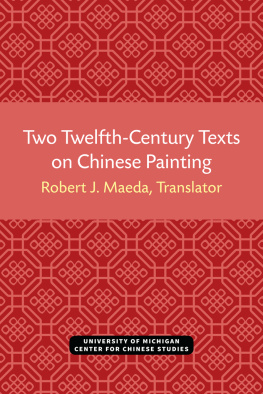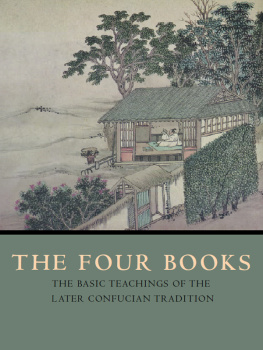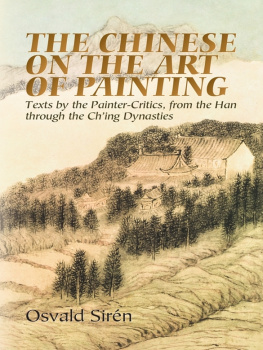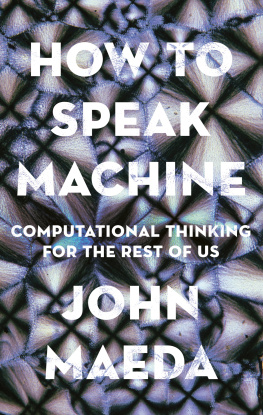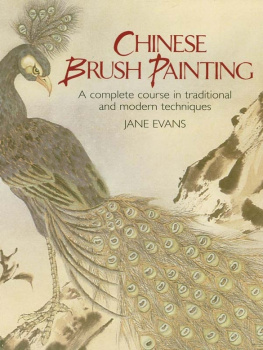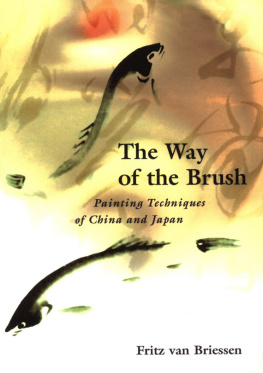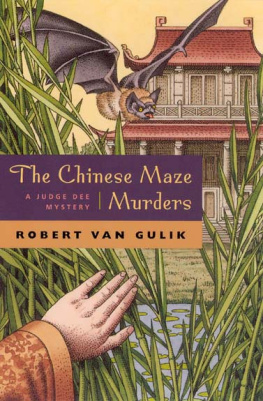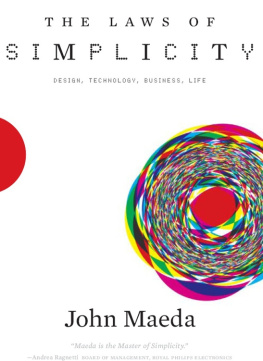Robert J. Maeda - Two Twelfth Century Texts on Chinese Painting
Here you can read online Robert J. Maeda - Two Twelfth Century Texts on Chinese Painting full text of the book (entire story) in english for free. Download pdf and epub, get meaning, cover and reviews about this ebook. year: 2020, publisher: Kenneth G. Lieberthal and Richard H. Rogel Center for Chinese Studies, genre: Art. Description of the work, (preface) as well as reviews are available. Best literature library LitArk.com created for fans of good reading and offers a wide selection of genres:
Romance novel
Science fiction
Adventure
Detective
Science
History
Home and family
Prose
Art
Politics
Computer
Non-fiction
Religion
Business
Children
Humor
Choose a favorite category and find really read worthwhile books. Enjoy immersion in the world of imagination, feel the emotions of the characters or learn something new for yourself, make an fascinating discovery.
- Book:Two Twelfth Century Texts on Chinese Painting
- Author:
- Publisher:Kenneth G. Lieberthal and Richard H. Rogel Center for Chinese Studies
- Genre:
- Year:2020
- Rating:4 / 5
- Favourites:Add to favourites
- Your mark:
- 80
- 1
- 2
- 3
- 4
- 5
Two Twelfth Century Texts on Chinese Painting: summary, description and annotation
We offer to read an annotation, description, summary or preface (depends on what the author of the book "Two Twelfth Century Texts on Chinese Painting" wrote himself). If you haven't found the necessary information about the book — write in the comments, we will try to find it.
Two Twelfth Century Texts on Chinese Painting — read online for free the complete book (whole text) full work
Below is the text of the book, divided by pages. System saving the place of the last page read, allows you to conveniently read the book "Two Twelfth Century Texts on Chinese Painting" online for free, without having to search again every time where you left off. Put a bookmark, and you can go to the page where you finished reading at any time.
Font size:
Interval:
Bookmark:

THE UNIVERSITY OF MICHIGAN CENTER FOR CHINESE STUDIES
MICHIGAN PAPERS IN CHINESE STUDIES
Ann Arbor, Michigan
TWO TWELFTH CENTURY TEXTS ON CHINESE PAINTING
Translations of the Shan-shui chun-chan chi  by Han Cho
by Han Cho  and Chapters Nine and Ten of Hua-chi
and Chapters Nine and Ten of Hua-chi  by Teng Chun
by Teng Chun 
by
Robert J. Maeda
Brandeis University
Michigan Papers in Chinese Studies
No. 8
1970
Open access edition funded by the National Endowment for the Humanities/Andrew W. Mellon Foundation Humanities Open Book Program.
Copyright 1970
by
Center for Chinese Studies
The University of Michigan
Ann Arbor, Michigan 48104
Printed in the United States of America
ISBN 978-0-89264-008-9 (hardcover)
ISBN 978-0-472-03813-8 (paper)
ISBN 978-0-472-12759-7 (ebook)
ISBN 978-0-472-90154-8 (open access)
The text of this book is licensed under a Creative Commons Attribution-NonCommercial-NoDerivatives 4.0 International License: https://creativecommons.org/licenses/by-nc-nd/4.0/
Contents
These translations of the Shan-shui chun-chan chi originally formed one portion of a doctoral dissertation in Fine Arts submitted to Harvard University in 1969. My thesis subject was Academy landscape painting of the twelfth century, particularly the transition between the Northern and Southern Sung styles. As part of my research I focussed on these two texts because both deal with the history and tenets of the Imperial Painting Academy of Emperor Hui-tsung (reigned 11011126) in the late Northern Sung period.
The Han Cho text is important because it is a model of academic ideals, dated to the Hsan-ho era (11191126), and because it is by a reputed member of the Academy. In essence, it is a treatise for beginning landscape painters, conservative in nature and not specifically directed at Academicians. Teng Chun in his history of painting titled Hua-chi is also concerned with the Academy but from an historians point of view.
Besides imparting insights into the taste and workings of the Academy, both writers, historian and Academician, in ways direct and indirect, show the influence of late Northern Sung literati attitudes towards painting.
The primary biographical source for the author of the Shan-shui chun-chan chi is the epilogue appended to the text. It was written by a certain Chang Huai  on the Calligraphy Board of the Han-lin Academy. He was then made a secretary on the History Board with a title of chih chang and a rank of tai-chao (official in attendance). At the time the epilogue was written, Han Cho had been granted the honorary title of chung hsn lang.
on the Calligraphy Board of the Han-lin Academy. He was then made a secretary on the History Board with a title of chih chang and a rank of tai-chao (official in attendance). At the time the epilogue was written, Han Cho had been granted the honorary title of chung hsn lang.
Further information about his social background and relative age when he wrote the treatise is supplied by Han Cho himself. He writes in his preface: For generations, my family has been in the learned circle. I have been a petty official... From childhood I have been very fond of painting and even now that I have reached old age my interest in it has not flagged.
Yet, Han Chos real identity, despite these facts, remains vague. There is ambiguity in the various editions of the text as to whether Han Cho was indeed a painter in Hui-tsungs Academy. does not convince this writer of their oneness since Han Cho was first and foremost a landscape painter and according to Chang Huai was interested in no other subject. It seems more reasonable to assume that these were two different men living in the same period.
What is the basis for biographers placing Han Cho in Hui-tsungs Painting Academy? The answer, it seems, lies in an examination of the text.
There are several ways of examining the Shan-shui chun-chan chi. First, one can read it simply as a manual for prospective landscape painters. As such, it would seem to be of limited value, especially to the modern reader. Why should a person interested in learning to paint landscapes read about the subject instead of turning his eyes upon nature itself. The Chinese painter, however, never did rely solely on his observation. What he saw in nature was always transformed into pictorial terms of brush and ink and was almost never a literal transcription of it. The one moment in Chinese painting history which is noted for the strict recording of nature is the period of Emperor Hui-tsungs Painting Academy in the late Northern Sung. In this regard, Sherman Lee and Wen Fong proposed a category which they called the Literal style. They wrote:
It is as if the painters [of this style] thought to probe reality by taking a detail from a Monumental picture and examining it, part by part...
In support of their interpretation of early twelfth century painting style, Lee and Fong use Han Chos text as a literary parallel. Both its date, 1121, being coeval with that of the late Northern Sung Painting Academy, and its author, a purported member of it, seem to warrant such a conclusion. In his text, Han Cho presses points and leaves very little to the imagination, wanting no stone, as it were, left unturned. But this is as much a characteristic of his literary style as it is of a literal attitude about landscape painting. A great portion of his treatise could very well serve as a dictionary of landscape. Han Cho seems to have had as one of his main goals a listing of all landscape definitions and their practical application in painting.
Much of what Han Cho writes has been borrowed from previous writers although he does not hesitate to change or add to their words. His main sources are Chang Yen-yans Li-tai ming-hua chi (A. D. 847), Ching Haos (late 9th, first half 10th c.) Pi-fa chi, Kuo Hsis Lin-chan kao-chih (1110?), and Kuo Jo-hss Tu-hua chien-wen chih (preface dated 1074). What differentiates the Ching Hao and Kuo Hsi texts from that of Han Cho is his organized and methodical approach compared to their often random, anecdotal, and allusive discussions. Han Cho is more blunt, taking the stance of a pedagogical sage. Since he wrote his work at a late stage of a life devoted to painting studies, his didacticism is perhaps excusable. As he also wrote in a period that saw the end of the first major style in the painting of landscape, his comprehensiveness is understandable.
In his attitude toward nature Han Cho can also be contrasted with Ching Hao and Kuo Hsi. He seems less interested in nature as such than he is in its depiction, i. e. painting. Unlike Ching Hao, he does not revel in the description of an actual landscape, nor does he give the same sense of ecstatic immersion in the scenery of a landscape painting as Kuo Hsi. His is a more detached, analytical view, that of an observer rather than a participant. While he is concerned with the minute details of nature he rails against the painter who would merely transcribe them into his painting. In this respect, he seems removed from the familiar stereotype of a painter in Hui-tsungs Painting Academy.
Thus, the academic character of the text is balanced by certain wen-jen tendencies. Han Chos view of painting sometimes suggests what James Cahill wrote about Sung wen-jen-hua:
As a worthy activity for the literatus... , painting is now a means of self-cultivation; and the products of this activity, as embodiments of the admirable qualities of cultivated individuals, serve a Confucian end in conveying those qualities to others.
Font size:
Interval:
Bookmark:
Similar books «Two Twelfth Century Texts on Chinese Painting»
Look at similar books to Two Twelfth Century Texts on Chinese Painting. We have selected literature similar in name and meaning in the hope of providing readers with more options to find new, interesting, not yet read works.
Discussion, reviews of the book Two Twelfth Century Texts on Chinese Painting and just readers' own opinions. Leave your comments, write what you think about the work, its meaning or the main characters. Specify what exactly you liked and what you didn't like, and why you think so.

